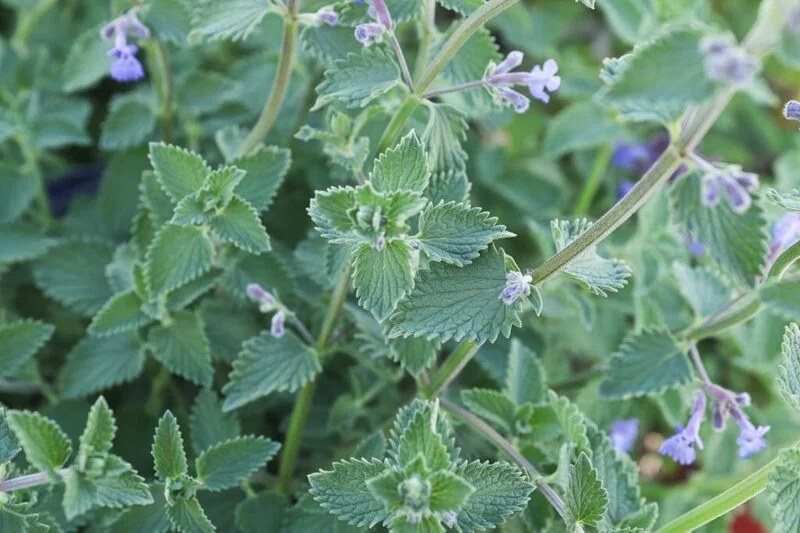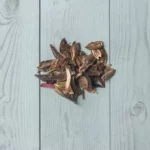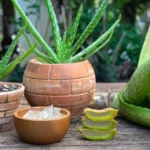Are you a fan of the furry little friends in your home? Then you might be familiar with the magical powers of a certain herb called catnip. This herb has a unique charm that our kitty companions simply can’t resist. But did you know that growing and harvesting catnip can be just as fun as watching your cat enjoy it? Let’s dig into the world of catnip together!
- Happy Cat – Pamper your cat with this happy cat collection. Most cats absolutely love the herb Catnip. This plant contains nepetalactone oil which gives most cats a sense of euphoria and intense happiness.
- Healthy Cat – Cat Grass grown from 100% Sweet Oats will help keep your cat healthy by providing fiber and natural trace elements such as vitamins A and D. It’s much safer for your cat than eating the grass outside.
- 100% Natural – Know exactly what you are giving your cat by growing your own Catnip and Cat Grass. These seeds are 100% natural and the plants will be safe for your cat to smell, chew, or play with. Two packets of Cat Grass and one packet of Catnip.
- Easy to Grow – Instructions included on each packet. Plus, we are available to answer all your questions. If these seeds don’t germinate, we will happily make it right for you.
- Safe and Sustainable – Our operation is fully solar powered, and Sow Right Seeds has taken the Safe Seed Pledge to sell only fresh Non-GMO heirloom seeds for you and your family.
What is Catnip?
Catnip, also known as Nepeta cataria, is a perennial plant that belongs to the mint family. It’s native to Europe and parts of Asia, but has been naturalized all around the world. The plant is renowned for its effect on cats. A mere whiff of this plant sends most cats into a state of absolute bliss. But it’s not just for cats! Humans have used catnip for centuries in herbal teas and remedies.
The Right Time to Harvest Catnip
So you’ve decided to grow some catnip for your feline friend or for a calming tea. Great choice! Now, when’s the perfect time to pick those fragrant leaves? The ideal time to harvest catnip is right before it flowers. This is when the leaves have the highest concentration of essential oils, which gives catnip its distinctive aroma. Typically, this happens in late spring or early summer. Watch your plant closely – when the buds start to form, it’s time to grab your shears!
Tools Needed for Harvesting Catnip
Before we start snipping away, let’s gather all the tools we need. Harvesting catnip is a fairly simple task. All you’ll need are a pair of sharp gardening scissors or pruners, a clean container or basket to collect the leaves, and gloves (if you prefer to keep your hands clean).
- SUPERIOR INDOOR PLANT FERTILIZER – MARPHYL Marine Phytoplankton is ideal as an outdoor and indoor plant fertilizer. It’s an excellent vegetable fertilizer, houseplant fertilizer, and lawn fertilizer. It’s great for your garden, greenhouse, and hydroponics. Enjoy gorgeous, colorful blooms with this exceptional flower food. Enhance soil quality and watch your trees, shrubs, vines, grass, plants, flowers, and vegetables thrive.
- NATURAL INDOOR PLANT FOOD – Marine Phytoplankton are Microalgae full of nutrients, vitamins, and minerals. It’s so much more than your average liquid plant fertilizer. MARPHYL’s fertilizer for indoor plants and outdoor plants, grasses, trees, flowers and more, provides an astounding array of nutritional elements. Packed with vitamins, minerals, essential fatty acids, DHA, EPA, amino acids, chlorophyll, and a vast spectrum of phytochemicals, so your lawn, garden, and greenhouses will flourish
- ORGANIC & SUSTAINABLE – Our Liquid Marine Phytoplankton Soil Enhancer is an organic, all purpose plant food that is harvested 100% naturally. It’s vegan, non-toxic, non-GMO & sustainably made with no preservatives making it safe for vegetable gardening, ground water, and pets. It replenishes your soil on a regular basis to ensure the continued growth and beauty of your vegetation. Our organic plant fertilizer will meet your every need and provide a safe environment for all gardening.
- MIRACULOUS & BENEFICIAL – Found in oceans across the world, marine phytoplankton are micro algae that infuse your plants, trees, grasses, and more with everything they need for health and longevity. High in potassium, nitrogen, and phosphorus as well as calcium and magnesium for lush foliage. Your lawn & garden will be the envy of the neighborhood, and your indoor plants will brighten your home.
- EASY TO USE WATER SOLUBLE FERTILIZER – Simply mix a 1:20 ratio of our liquid plant fertilizer with water. Once in the water, stir, and then pour onto the plants. Perfect for use in small and large sprayers. Recommended use is every two weeks. You’ll see the difference after just one application!
Step-by-Step Guide to Harvesting Catnip
- Approach the Catnip Plant: Step up to your lovely catnip plant, ideally in the early morning after the dew has dried but before the heat of the day sets in.
- Select the Branches: Look for healthy, full branches. Make sure they’re free from any disease or insect damage.
- Cut the Branches: Using your sharp gardening scissors or pruners, cut the branches about a third of the way down from the top.
- Gather the Cuttings: Collect the cut branches in your container or basket. Make sure to handle them gently to avoid bruising the leaves.
- Repeat: Continue this process until you’ve harvested as much catnip as you need. Remember, the plant will grow back, so don’t worry if you take a bit more than planned!
How to Dry and Store Catnip After Harvest
Now that you have your fresh catnip, it’s time to prepare it for storage. Drying catnip is easy, and it allows you to store it for long periods.
- Rinse and Dry: Start by gently rinsing your catnip under cold water to remove any dirt. Then, pat it dry with a clean towel.
- Bundle and Hang: Next, tie the stems of your catnip branches together to form small bundles. Hang these bundles upside down in a warm, dry, dark place with good air circulation. This could be a pantry, closet, or even a paper bag with holes in it.
- Wait: Leave your catnip to dry for about a week or until the leaves are crispy to the touch.
- Store: Once dry, remove the leaves from the stems and store them in an airtight container. Keep the container in a cool, dark place to maintain the best flavor and potency.
Now, whenever you want to treat your kitty or brew a relaxing tea, you’ll have dried catnip at the ready!
Tips for Growing a Healthy Catnip Plant
Growing catnip is just as fun as harvesting it! Here are a few quick tips to keep your plant healthy:
- Sunshine Lover: Catnip loves the sun, so be sure to place it somewhere it can bask in plenty of natural light.
- Soil and Water: Catnip isn’t fussy about soil, but it does prefer well-draining soil. As for water, make sure the soil doesn’t stay too wet or dry. Aim for a nice balance!
- Space to Grow: Give your catnip room to grow. If you’re planting it outside, place it about 15 to 20 inches apart from other plants.
- Kitty Caution: If you have cats, you might want to protect your plant. Cats love rolling, chewing, and basically basking in catnip, which can damage or kill the plant.
- Everything You Need – Kit includes: Seed packets of Catnip and Cat Grass, 4 fiber planting pots, 5 expanding soil discs, 4 wooden plant markers.
- Happy & Healthy Cat – Catnip contains nepetalactone oil which stimulates a cat’s pheromone receptors and gives them a sense of euphoria. Cat Grass grown from 100% Sweet Oats will help keep your cat healthy by providing fiber and natural trace elements such as vitamins A and D.
- Sustainable Gift – This 100% natural and compostable kit would be a nice gift. Know exactly what you are giving your cat – these seeds are natural and safe for your cat to smell, chew, or play with.
- Easy to Grow – Instructions included on each packet. Plus, we are available to answer all your questions. If these seeds don’t germinate, we will happily make it right for you.
- Safe and Sustainable – Our operation is fully solar powered, and Sow Right Seeds has taken the Safe Seed Pledge to sell only fresh Non-GMO heirloom seeds for you and your family.
Frequently Asked Questions About Harvesting Catnip
Can I harvest catnip more than once?
Absolutely! In fact, regular harvesting encourages new growth. Just remember to leave enough leaves for the plant to keep growing.
Can I use fresh catnip?
Yes, you can! Fresh catnip can be used in the same ways as dried. The potency might be slightly different, but your cat (or tea) won’t mind.
My catnip doesn’t smell strong. What can I do?
If your catnip lacks that potent aroma, it might need more sunshine. Try moving it to a sunnier spot and give it a bit of time.
Conclusion
So, there you have it – a beginner’s guide to harvesting catnip! It’s a fun, easy process, and whether you’re growing it for your feline friends or for a calming cup of tea, there’s a lot to love about this fragrant herb. So get out there, harvest away, and enjoy the bounty that catnip brings!







